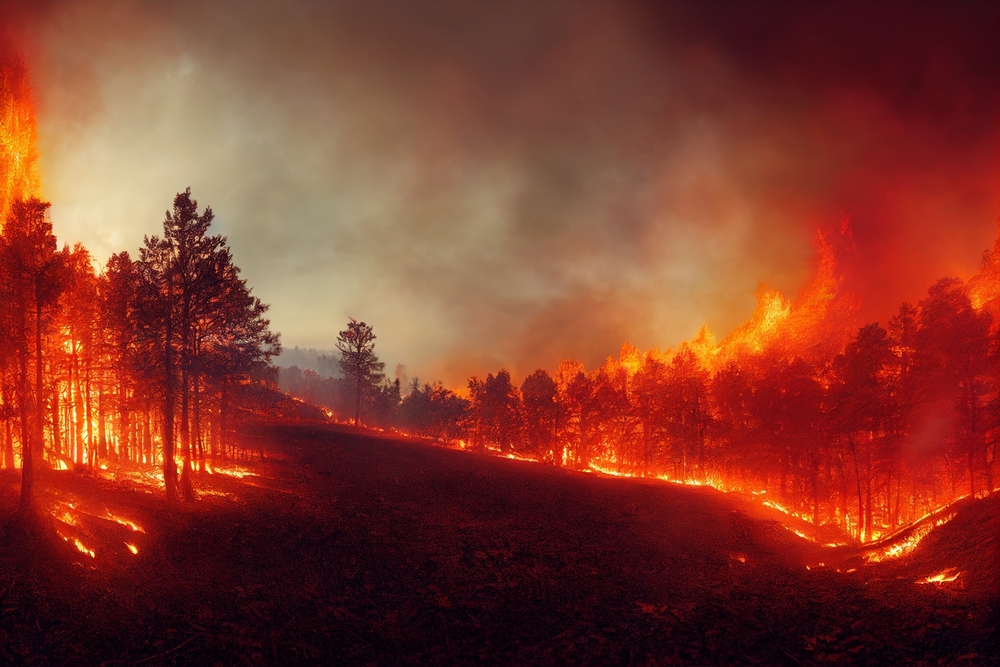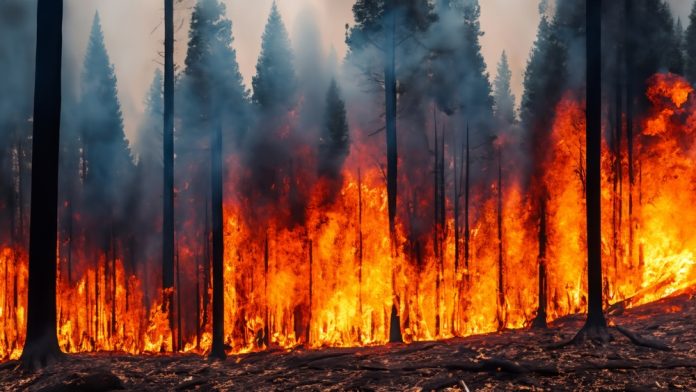A major new study has revealed that global carbon dioxide (CO2) emissions from forest fires have surged by 60% since 2001, with emissions in northern boreal forests nearly tripling.
The study, led by the University of East Anglia (UEA), highlights the increasing role of forest fires in accelerating climate change and underscores the urgent need for better forest management and climate mitigation strategies.
The research is supported by the UK Natural Environment Research Council (NERC), the European Commission’s Horizon Europe 2020 programme, and the European Space Agency.
Rise in forest fire emissions
The study divides the world into distinct fire regions, called ‘pyromes,’ based on environmental, human, and climatic factors that influence fire patterns.
The researchers discovered that one of the largest pyromes, spanning the northern boreal forests of Eurasia and North America, saw its fire-related CO2 emissions nearly triple between 2001 and 2023.
The research also points to significant increases in CO2 emissions across other extratropical forest regions, contributing an additional half a billion tonnes of CO2 annually.
This shift in emissions has moved away from tropical forests, once the epicentre of forest fire activity, toward regions in the northern latitudes.
Climate change fuelling forest fires
The increase in emissions is linked to changing weather patterns that favour more intense and frequent forest fires.
Hot, dry conditions caused by heatwaves and droughts have become more common, creating the perfect environment for fires to spread.
Additionally, rapid warming in high northern latitudes, where temperatures are rising twice as fast as the global average, has boosted vegetation growth, providing more fuel for wildfires.
Lead author, Dr Matthew Jones, from UEA’s Tyndall Centre for Climate Change Research, emphasised that climate change is a key driver of the escalating severity and frequency of forest fires.
He explained: “Increases in both the extent and severity of forest fires have led to a dramatic rise in the amount of carbon emitted by forest fires globally.
“Startling shifts in the global geography of fires are also underway, and they are primarily explained by the growing impacts of climate change in the world’s boreal forests.”
Growing threat to carbon storage
Forests play a crucial role in removing CO2 from the atmosphere, helping to slow global warming. Reforestation and afforestation efforts are critical to meeting international climate goals, as they aim to offset human-generated emissions. However, forest fires now threaten this delicate balance.

The severity of forest fires has also increased, with the carbon combustion rate—measuring how much carbon is released per area burned—jumping by 50% globally since 2001.
This escalation means that the carbon released by fires is far outweighing the amount of carbon forests are able to absorb during post-fire recovery.
Unmasking the impact of wildfires
Interestingly, the study highlights a contrast between forest fire emissions and those from tropical savannah fires, which have decreased since 2001.
While overall fire activity worldwide has dropped by 25% due to reduced burning in savannah grasslands, the increase in forest fires presents a much more serious issue.
Forest fires are far more destructive than grassland fires, releasing larger amounts of harmful smoke and presenting greater risks to both local and distant communities exposed to toxic air.
New insights for wildfire management
The researchers used advanced machine learning techniques to group global forest regions into 12 pyromes, which helped them isolate the effects of climate change from other factors, such as land use. These insights will be crucial for developing effective wildfire management strategies.
Dr Jones highlighted the importance of shifting fire management approaches from reactive to proactive. “Substantial financing is required to support strategic programmes of forest management, stakeholder engagement, and public education, all of which represent a meaningful shift of fire management strategy from largely reactive to increasingly proactive.
“For example, priority areas for forest management and fire breaks must be defined based on proactive monitoring of forest productivity, particularly in the extratropics.
“Managing fuel loads in places where they could present the greatest danger during fire-favourable weather is a key priority for limiting the severity and impact of fires when they do occur.”
Urgent call for action
The study raises a clear warning: without addressing the root causes of climate change, forest fires will continue to expand and intensify. This not only threatens forest ecosystems but also undermines global efforts to reduce CO2 emissions and slow the pace of global warming.









